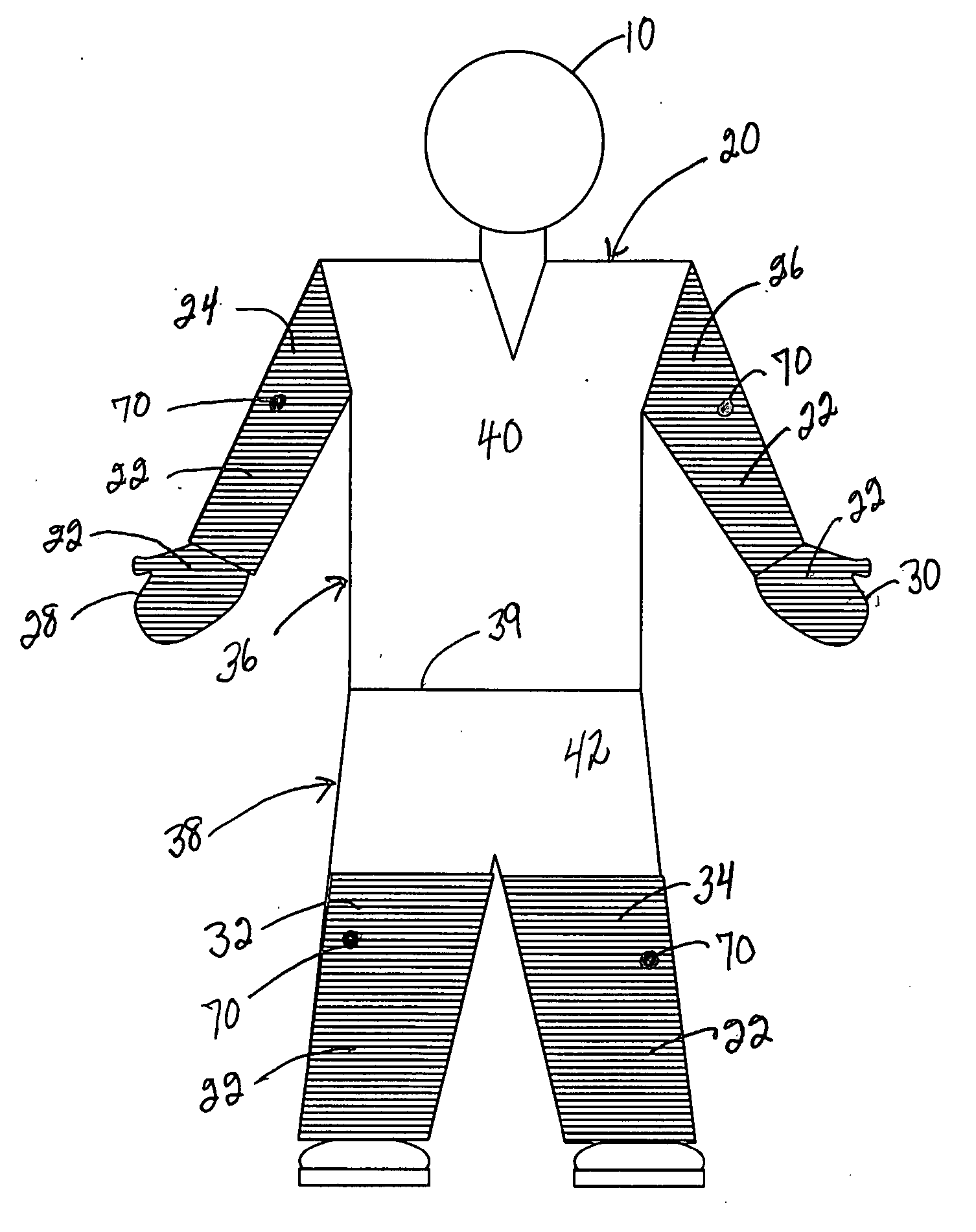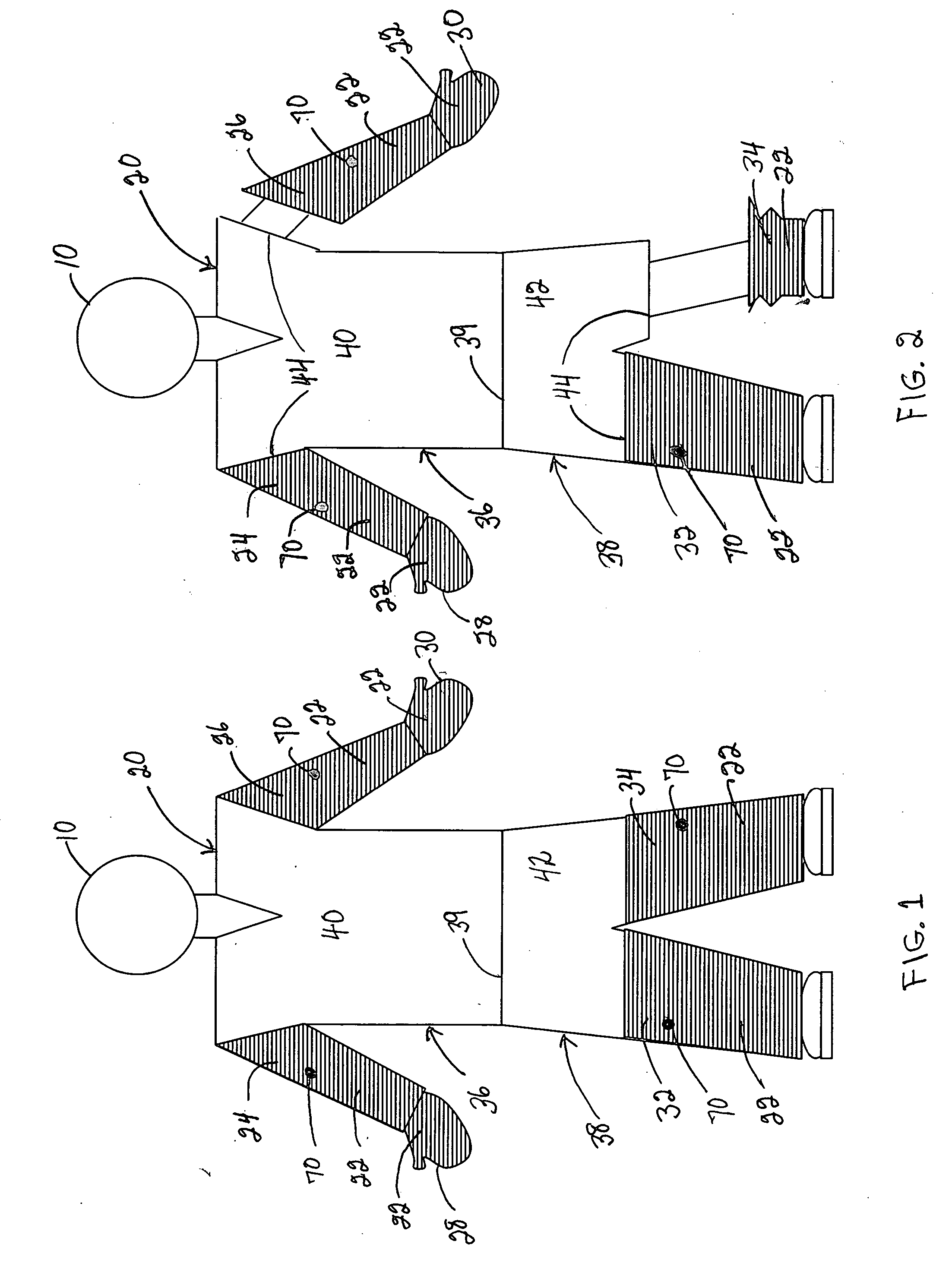Cooling garment having phase change material in its extremity portions
a technology of extremity portion and cooling garment, which is applied in the field of cooling garments, can solve the problems of limited body self-cooling mechanism, effective cooling of the body, and replenishment of body fluids, so as to facilitate at least one or reactivation and replacement, and facilitate at least one of reactivation and replacement.
- Summary
- Abstract
- Description
- Claims
- Application Information
AI Technical Summary
Benefits of technology
Problems solved by technology
Method used
Image
Examples
Embodiment Construction
[0024]FIG. 1 depicts a front view of a worker 10 wearing a cooling garment 20 having phase change material (PCM) 22 (indicated by horizontal hatching) in its extremity portions, e.g., right and left arms 24, 26, right and left gloves 28, 30, and right and left legs 32, 34. The PCM 22 may be secured within the garment using any convenient means. For example, the PCM 22 may be attached (e.g., sewn, molded, etc.) to the inner portion of the garment such that the PCM 22 is in direct contact to the skin of the worker 10. Alternatively, the PCM 22 may be disposed between two or more layers of material, with the material disposed between the PCM 22 and the worker 10 transferring heat between the worker 10 and the PCM 22. PCM 22 typically will be incorporated in small pads adjacent a wearer's hands, arms, legs, or other places on the body that have good circulation and therefore good heat transfer ability. Typically, the pads will be adapted to make good skin contact with a wearer to increa...
PUM
 Login to View More
Login to View More Abstract
Description
Claims
Application Information
 Login to View More
Login to View More - R&D
- Intellectual Property
- Life Sciences
- Materials
- Tech Scout
- Unparalleled Data Quality
- Higher Quality Content
- 60% Fewer Hallucinations
Browse by: Latest US Patents, China's latest patents, Technical Efficacy Thesaurus, Application Domain, Technology Topic, Popular Technical Reports.
© 2025 PatSnap. All rights reserved.Legal|Privacy policy|Modern Slavery Act Transparency Statement|Sitemap|About US| Contact US: help@patsnap.com



